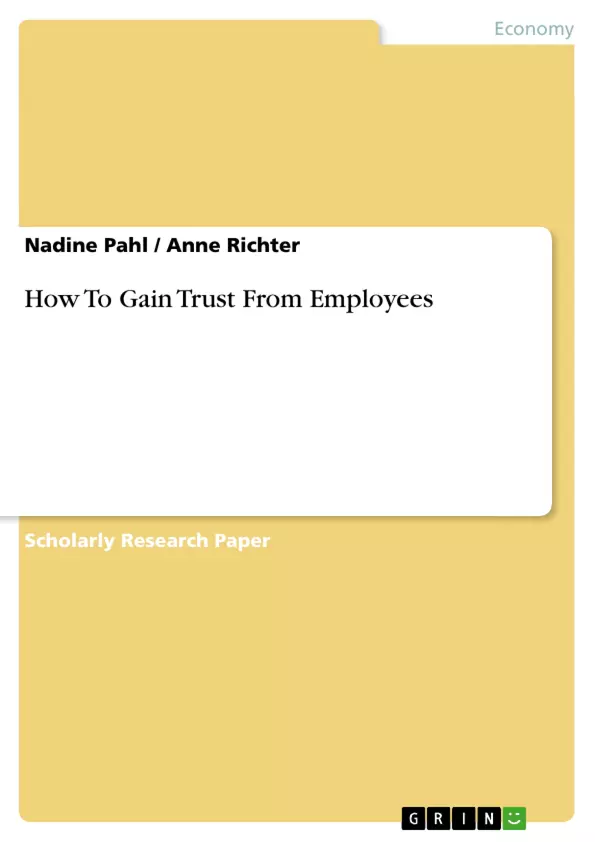‘Trust permits risk, which permits change, which permits growth.’
You know when you have trust; you know when you don’t have trust. Trust is built and maintained by many small actions over time.
In the business environment, trust is also warned, over time, through day-to-day actions making the right choices even in difficult situations. There is a human need to trust and respect the leaders into whose hands we deliver ourselves. Trust forms the foundation for effective communication, employee retention, and employee motivation and contribution of discretionary energy, the extra effort that people voluntarily invest in work. When trust exists in a company or in a relationship, almost everything else is easier and more comfortable to achieve. A manager will not get top performance out of any employee who does not trust him. Without the employees' trust managers will not get that
spark of creativity from them that is so important. Employees will not innovate that one little idea that could have kept a company ahead of its competitor.
Yet, even in a company in which trust is a priority, things happen daily that can injure trust. Trust is the crucial ingredient of organisational effectiveness.
Building it, maintaining it, and restoring it when it is damaged must be at the top of every manager’s agenda. Trust is not a matter of technique, but of character; managers are trusted because of their way of being, not because of their polished exteriors or their expertly crafted communications. Gaining employees trust is about telling the truth, even when it is difficult, and being truthful, authentic. Of course, there are no fixed rules of how to gain trust from your employees.
But there are some easy but important guidelines that help managers creating a business environment where trust has the chance to build and maintain.
Inhaltsverzeichnis (Table of Contents)
- Overview
- Introduction
- What is Trust?
- Importance of Trust for a Company
- The Seeds of Employee Trust
- Trust or Not To Trust - The Trust Model
- Factors that Inspire Trust: Approach of the Trust Model
- Fair Process
- Enemies of Trust
- Ways to Gain and Sustain Employee Trust
- Necessary Organisational Structures
- Role of Corporate Culture and Corporate Values
- Important Leadership Soft Skills
- How to Rebuild Damaged Trust
Zielsetzung und Themenschwerpunkte (Objectives and Key Themes)
This paper aims to explore how to gain and maintain employee trust within a company. It examines the importance of trust for organizational effectiveness and identifies key factors that contribute to building and sustaining this crucial element.
- The definition and importance of trust in the workplace
- Factors that foster or hinder trust, including organizational structures and leadership styles
- The role of corporate culture and values in building trust
- Practical strategies for gaining and maintaining employee trust
- Methods for rebuilding trust after it has been damaged
Zusammenfassung der Kapitel (Chapter Summaries)
The Overview introduces the concept of trust and its vital role in organizational success. The section on What is Trust? and Importance of Trust for a Company defines trust and elaborates on its benefits, such as improved communication, retention, and motivation. The Seeds of Employee Trust delves into a trust model, outlining factors that inspire trust and those that undermine it. This section also discusses fair processes and their impact on building trust. Ways to Gain and Sustain Employee Trust explores organizational structures, corporate culture, leadership skills, and strategies for rebuilding damaged trust.
Schlüsselwörter (Keywords)
Employee trust, organizational effectiveness, leadership, corporate culture, fair process, trust model, employee motivation, communication, building trust, rebuilding trust.
- Citation du texte
- Nadine Pahl (Auteur), Anne Richter (Auteur), 2008, How To Gain Trust From Employees, Munich, GRIN Verlag, https://www.grin.com/document/124552



